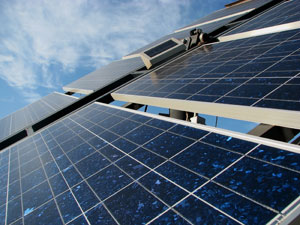Solar Cells for High-Tech Devices and Equipment
Download Audio VersionSolar cells are used to produce electricity from sunlight. This is a device that uses the process of photovoltaics and powers low-voltage applications. Such devices can be combined in parallel or series arrangements in order to produce a higher current or voltage. They are ideal for applications such as motors, flashlights, and others.
History of Solar Cells
The first device was designed by the American inventor Charles Fritts in 1883. He used a layer of gold to coat selenium and build a cell. Its energy efficiency was very low, however. Another device was created by Russell Ohl who used silicon to build it. This cell also had an efficiency of less than 1 percent. A more efficient device was created by Daryl Chapin, Calvin Fuller, and Gerald Pearson. The conversion efficiency was six percent, and the device was made from several layers of silicon. It converted electrons into electricity and was first tested on a telephone carrier system. This is the prototype of today’s solar batteries.
The first licenses for PV technologies were granted in 1955. Decoder devices and dollar bill chargers were produced using silicon photovoltaic technologies. These cells had a conversion efficiency of about 2 percent. Hoffman Electronics produced more efficient devices in 1957. They had an efficiency of 8 percent while a year later, 9 percent efficient PVs were produced. The first photovoltaic-powered satellite was launched in 1958 and was in operation during the next eight years. Worldwide photovoltaic production reached over 9.3 MW in 1982. The National Center for Photovoltaics opened doors in 1996 in Colorado, U.S.
Solar Cells and Applications

Solar cells have a number of applications and are used for vehicles, radios, laptop and cell phone charges, lights, and lamps. They are also used for military equipment, DC motors, and calculators.
Photovoltaic applications are also used in international space stations. Some of the energy is stored, and the rest is used for life support. Such space station is being built at the moment and is equipped with Fresnel reflectors. Photovoltaics also generate electricity for telescopes and devices that otherwise require expensive sources of fuel. Sun-powered cars also use photovoltaics that generate electricity for the motor. It is either stored in the battery or used by the vehicle. Most vehicles are used for research purposes because only a small amount of sunlight is transformed into energy. Many large manufacturers invest in research and innovative technologies to build efficient solar cars. General Motors, for example, has designed a car that incorporates lightweight composites and weighs less than 200 kg.
New Technologies
A research team at North Carolina State University works to solve one of the biggest problems of sun-powered technologies. Light is lost due to reflection, and this reduces the total energy output. The answer may lie in biomimicry. The eyes of moths are non-reflective meaning that they use very little light and can still see in the dark. Moth eyes have evolved in such a way that light is not reflected. Studying the eyes of moths, scientists were able to solve the problem of reflection. Thin-film interference occurs when a layer of one substance is placed on top of another. This is how the rainbow occurs. It is a serious problem for technologies that incorporate films with many layers. They reflect some wavelengths and energy is lost. Technologies that have multiple layers lose more energy. The research team has designed a nanostructure that reduces interference and increases efficiency. Such nanostructures are placed in films – on top and on the bottom layer. They are arranged in such a way as to mimic the structure of moth eyes. The amount of reflected sunlight is thus being reduced up to 100 times. This technology may soon be available for commercial use.
A research team in Australia has significantly reduced the size of printed solar technologies. They can be used for a number of devices and buildings, including laptops and windows. The scientists were able to print A3-sized cells that are only 30 cm in width. A new printer technology was used to reduce their size. This is an important discovery that can help increase the efficiency of sun-powered technologies. This size opens many possibilities. It can be used for a variety of interactive elements and devices, for powering lights, as backup power for computers, advertising signage, and a lot more. The new printing technology is expensive – the printer costs $200,000 and uses photovoltaic ink. The technology is similar to printers that are used to print signs and images on t-shirts.
Things to Consider When Buying Solar Cells
New solar cells pack more watts and are smaller than previous devices. Avoid devices with broken connections, condensation under the glass, as well as cracked glass.
